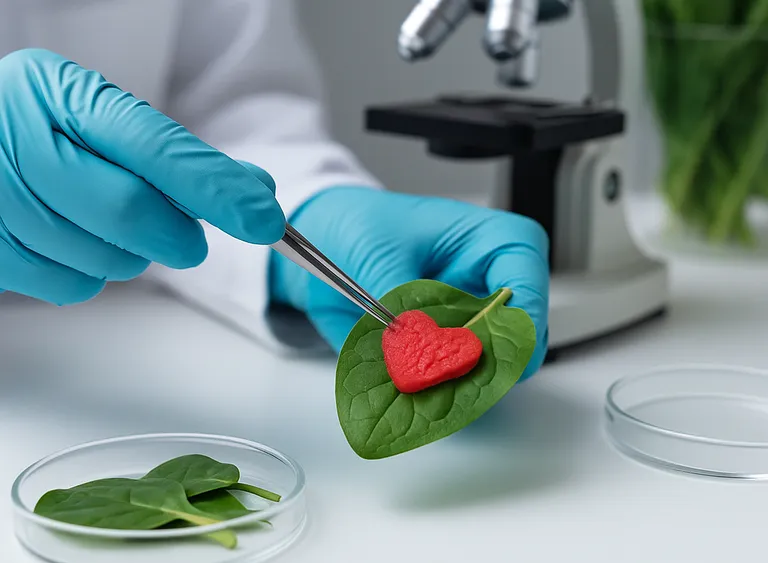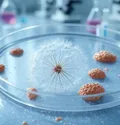In a groundbreaking fusion of plant biology and medical science, researchers have successfully used spinach leaves to grow beating human heart tissue. This innovative approach may pave the way for revolutionary advances in tissue engineering and organ regeneration.
How It Works
The research involves a process called decellularization, where the plant cells in spinach leaves are carefully removed, leaving behind the cellulose-rich vascular framework. This network, which once carried water and nutrients through the plant, can now support blood flow when seeded with human heart cells.
Scientists then introduce live human heart cells into the spinach leaf’s vascular channels. Within days, these cells adhere to the leaf structure, begin to grow, and even exhibit contractile (beating) behavior — a critical step for functional heart tissue.
Why Spinach?
Spinach leaves are ideal for this type of bioengineering due to:
- Their naturally occurring vascular system, mimicking the structure of human capillaries.
- The strength and flexibility of their cellulose structure.
- Widespread availability and low cost.
Future Implications
This advancement holds promise for addressing the shortage of donor organs and for improving treatments for cardiovascular disease. It also introduces a more sustainable method for growing tissues, using biodegradable and abundant plant-based scaffolds.
Researchers are now exploring whether other leafy greens can be used for similar tissue growth, including kale and parsley.
Conclusion
The successful use of spinach leaves as scaffolds for heart tissue regeneration marks a milestone in medical innovation. As the boundaries between plant and human biology continue to blur, the future of bioengineered organs looks greener — literally.
By ✍️ Tammy Castillo - MicuPost Team
Sources:



